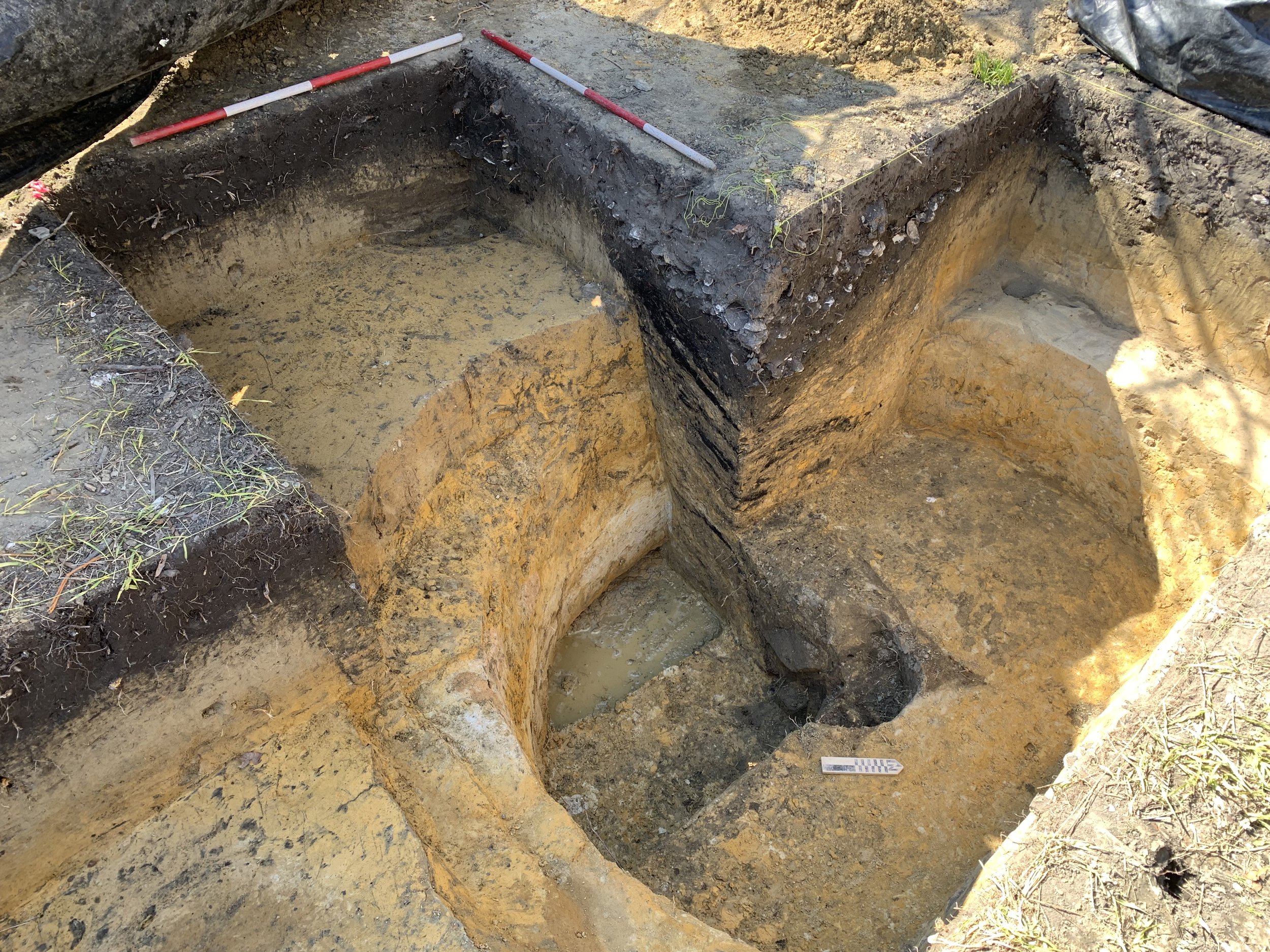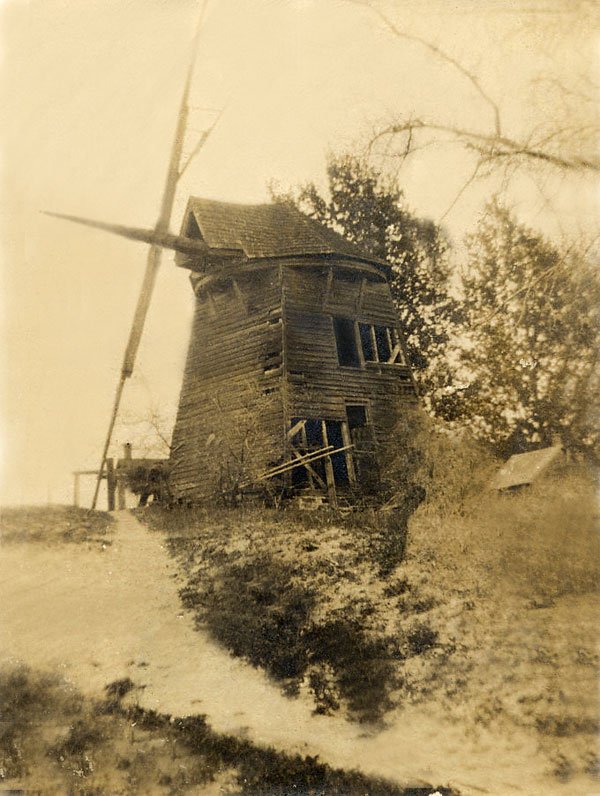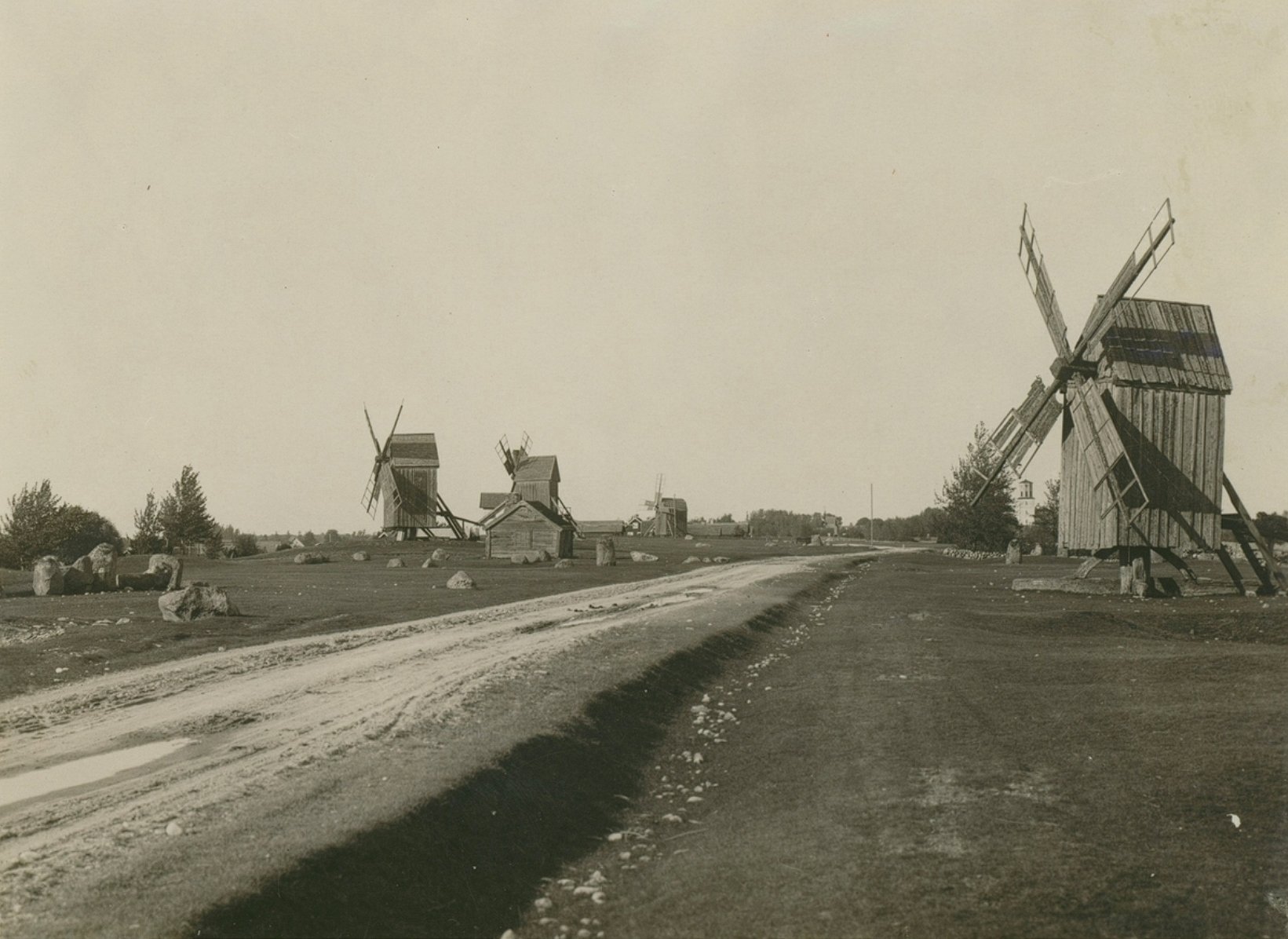Today, wind power means arrays of giant, three-pronged turbines strung along hillsides or protruding from the ocean floor. Historically, along the eastern seaboard of North America, windmills were also not uncommon in the landscape, the power of air currents being used to grind grain grown in nearby farm fields.
In the 18th and 19th centuries, several windmills were once ranged along the banks of the Maurice River in Cumberland County, southern New Jersey, each one rotating on a large wooden post to capture in its sails the power of the prevailing nor’easter gales. None of these windmills survive today, although their former existence is witnessed on historic maps and in old documents and photographs.
Over the winter of 2021-22, a team of Hunter Research archaeologists, surveying the left bank of the Maurice River just below Leesburg in advance of a proposed commercial marine support facility for offshore wind power development, found evidence of a mid-18th-century peg, or sunken post, windmill. The remains were vestigial, to say the least, consisting of a sizeable hole, 8.5 feet deep and between 8 and 9 feet in diameter, containing the rotted imprint of a 2-foot-square timber post, along with other subsurface structural traces nearby. Associated artifacts, including a “Georgius II Rex” half penny dated 1735, along with documentary evidence, suggest that the windmill was most likely built and operated by members of the Peterson family, who were among the first Swedish settlers to take up residence in the Maurice River valley in the early 1700s.
The proposed development project will thankfully avoid what still remains of the windmill and its site will be marked with an interpretive sign.

![21082 Figure 4.12 - EU 6, 7, 8, 9 Plan View [Landscape 11x17]_1.png](https://images.squarespace-cdn.com/content/v1/54eb7fcce4b0a4e937b40d71/1683044600597-RAVE0SVB6WJ22GRZ8IP8/21082+Figure+4.12+-+EU+6%2C+7%2C+8%2C+9+Plan+View+%5BLandscape+11x17%5D_1.png)
![21082 Figure 4.14 - EU 6 NW Profile and EU 9 SE, SW and NW Profiles [Landscape 11x17]_1.png](https://images.squarespace-cdn.com/content/v1/54eb7fcce4b0a4e937b40d71/1683044600626-2STHIDUPURQFTA0GL7S7/21082+Figure+4.14+-+EU+6+NW+Profile+and+EU+9+SE%2C+SW+and+NW+Profiles+%5BLandscape+11x17%5D_1.png)

